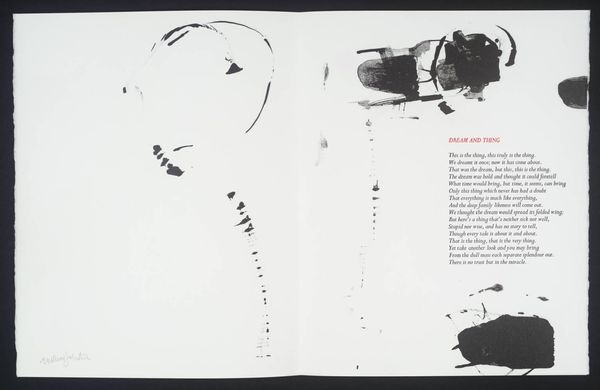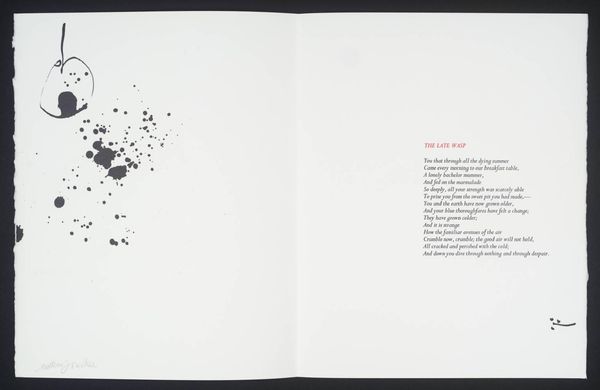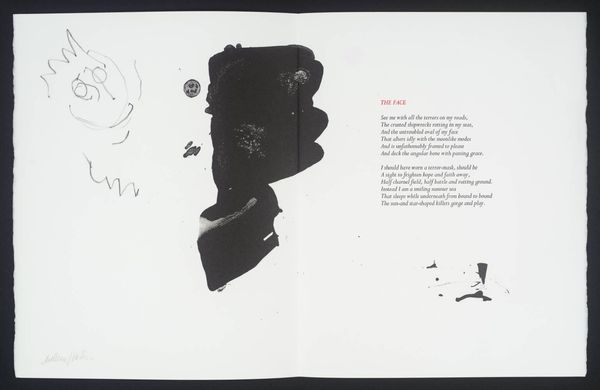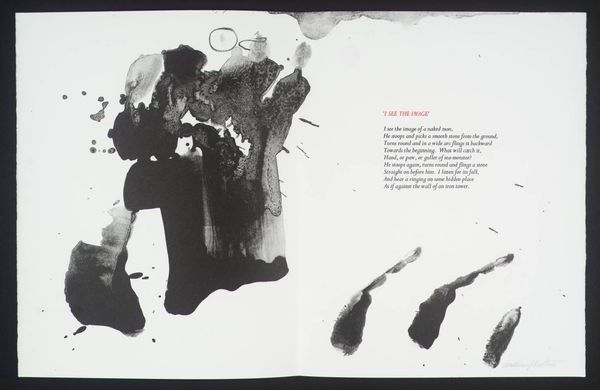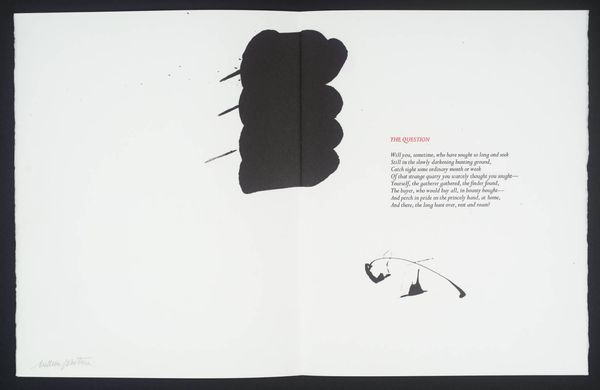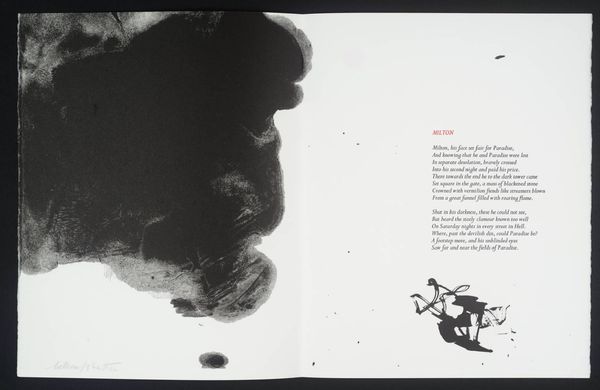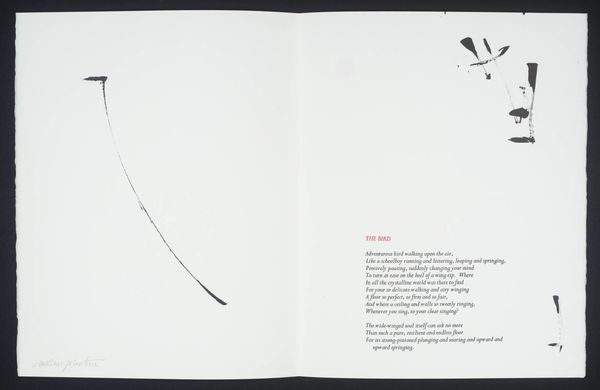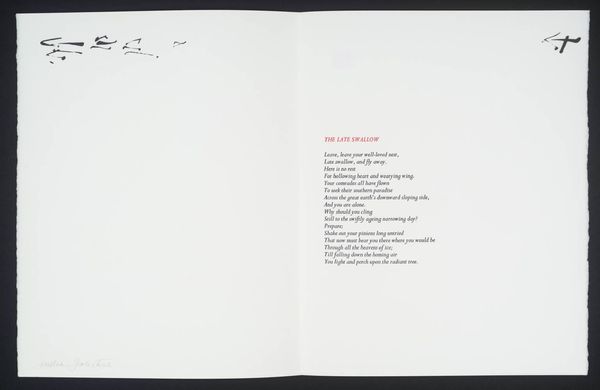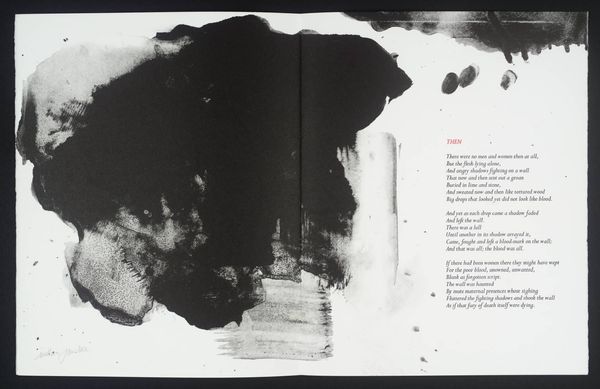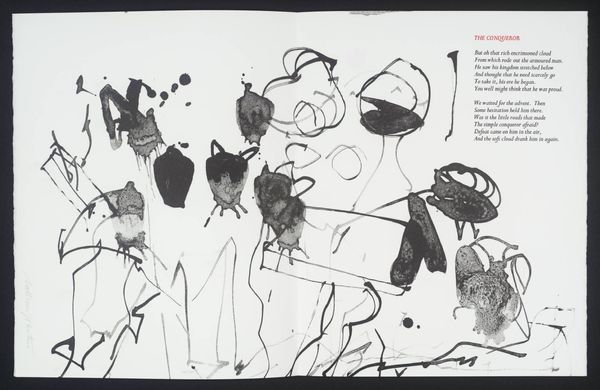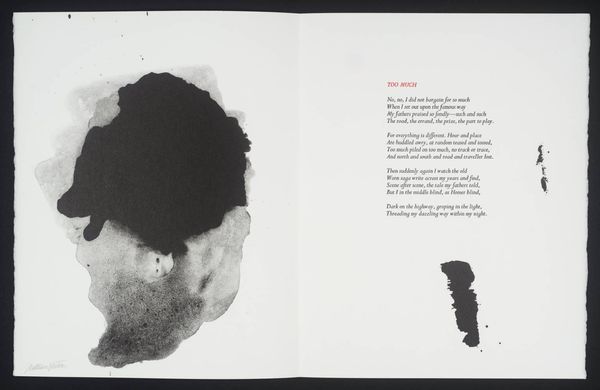![[title not known] by William Johnstone](/_next/image?url=https%3A%2F%2Fd2w8kbdekdi1gv.cloudfront.net%2FeyJidWNrZXQiOiAiYXJ0ZXJhLWltYWdlcy1idWNrZXQiLCAia2V5IjogImFydHdvcmtzL2E0M2U3OWQzLTcyYTYtNDFlNC1hOGVjLTllODdmNzlhYzQ4Ni9hNDNlNzlkMy03MmE2LTQxZTQtYThlYy05ZTg3Zjc5YWM0ODZfZnVsbC5qcGciLCAiZWRpdHMiOiB7InJlc2l6ZSI6IHsid2lkdGgiOiAxOTIwLCAiaGVpZ2h0IjogMTkyMCwgImZpdCI6ICJpbnNpZGUifX19&w=3840&q=75)
Dimensions: image: 324 x 511 mm
Copyright: © The estate of William Johnstone | CC-BY-NC-ND 4.0 DEED, Photo: Tate
Curator: What strikes me immediately is the raw quality of the red pigment against the stark white of the paper. It really emphasizes the materiality of the print itself. Editor: Absolutely. And the red evokes such a visceral response. It's blood-like, suggesting perhaps loss or sacrifice, mirroring the poem "When the Trees Grow Bare on the High Hills" beside it. Curator: The artist, William Johnstone, seems to have used a printmaking technique that allows the pigment to drip and bleed, creating these irregular shapes. It's almost as if the process itself is mirroring the poem’s theme of dissolving into space. Editor: Yes, the poem describes a process of emptying, of becoming "perfect and cold." The visual representation captures that sense of a slow, almost painful release. The repeated forms, like abstract trees or figures, could represent the fading of memory or the shedding of identity. Curator: It's interesting how Johnstone combines the visual and the textual. The poem isn't merely an accompaniment; it's intrinsic to the work, influencing how we perceive the imagery and vice versa. Editor: Indeed. By considering the red pigment and its application, and how the poem connects to it, we gain a deeper understanding of Johnstone's meditation on change and the cyclical nature of existence.
